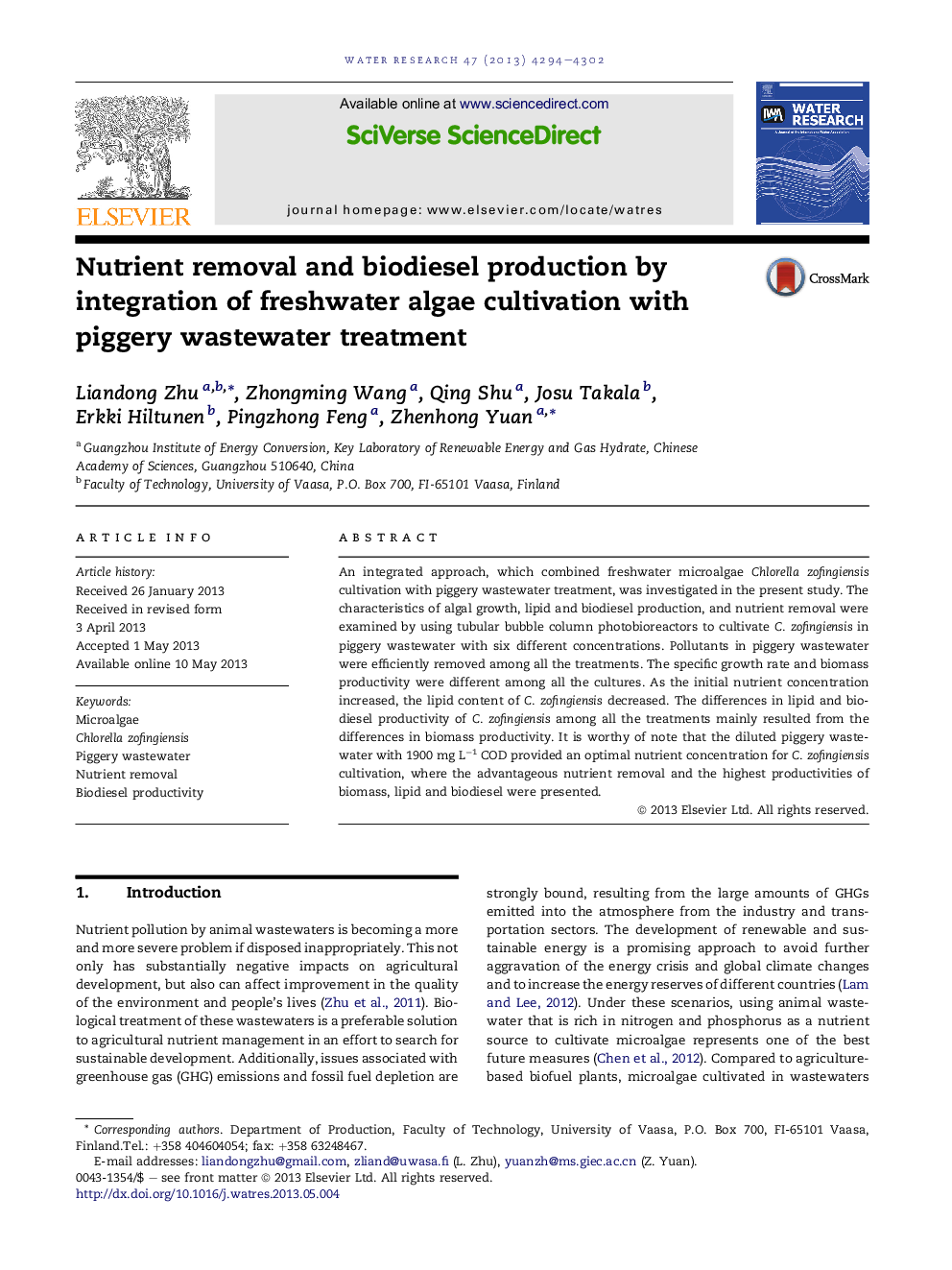| Article ID | Journal | Published Year | Pages | File Type |
|---|---|---|---|---|
| 4481978 | Water Research | 2013 | 9 Pages |
•Pollutants in piggery wastewater were efficiently utilized by Chlorella zofingiensis.•Biomass productivity ranged from 106.28 to 296.16 mg L−1 day−1.•The initial nutrient concentration could influence lipid accumulation.•Biodiesel productivity ranged from 11.85 to 30.14 mg L−1 day−1.•Piggery wastewater with 1900 mg L−1 COD was optimal for algal growth.
An integrated approach, which combined freshwater microalgae Chlorella zofingiensis cultivation with piggery wastewater treatment, was investigated in the present study. The characteristics of algal growth, lipid and biodiesel production, and nutrient removal were examined by using tubular bubble column photobioreactors to cultivate C. zofingiensis in piggery wastewater with six different concentrations. Pollutants in piggery wastewater were efficiently removed among all the treatments. The specific growth rate and biomass productivity were different among all the cultures. As the initial nutrient concentration increased, the lipid content of C. zofingiensis decreased. The differences in lipid and biodiesel productivity of C. zofingiensis among all the treatments mainly resulted from the differences in biomass productivity. It is worthy of note that the diluted piggery wastewater with 1900 mg L−1 COD provided an optimal nutrient concentration for C. zofingiensis cultivation, where the advantageous nutrient removal and the highest productivities of biomass, lipid and biodiesel were presented.
Graphical abstractFigure optionsDownload full-size imageDownload high-quality image (180 K)Download as PowerPoint slide
